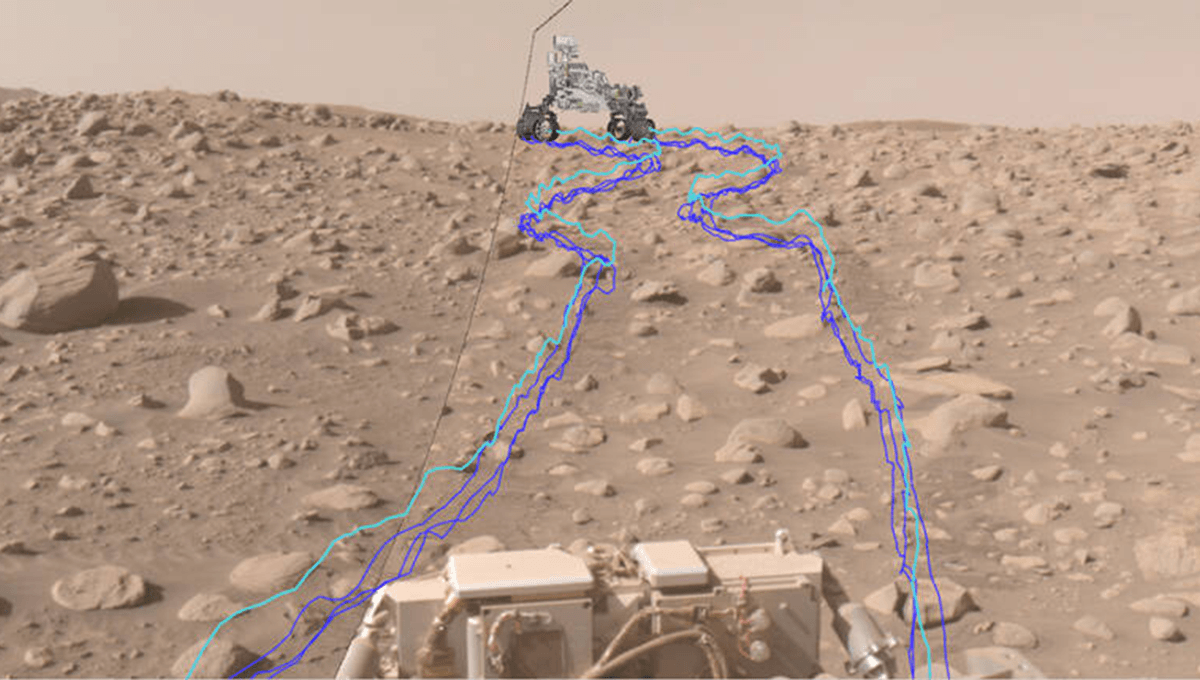
NASA’s Perseverance rover has set a new speed record, leaving the previous Mars rovers eating its Martian dust.
Since successfully landing on Mars in February 2021, the Perseverance Rover has achieved some notable firsts, including producing enough oxygen to keep a small dog alive for an impressive 10 hours on the Red Planet. According to a paper on the rover’s automatic navigation software, the rover has been crushing its predecessors in terms of speed, navigating difficult rocky terrain in “Snowdrift Peak” at impressive speeds.
“If you take out the sols (Martian days) dedicated to mission science, the traverse through Snowdrift Peak only took six autonomous drive sols, which is probably 12 sols faster than Curiosity would have taken,” Tyler Del Sesto, deputy rover planner lead for Perseverance at JPL in Southern California said in a statement. “Of course, everybody on the team knows we only got to this level of performance by standing on the shoulders of giants. Sojourner, Spirit, Opportunity, and Curiosity were the trailblazers.”
Getting through the field of boulders – over 518 meters (1,700 feet) wide – was no easy feat. While NASA plots general route points for the rover, Perseverance was left to navigate the field of boulders alone using its onboard cameras and AutoNav software.
Delegating navigation to the rover speeds up the process, as happened when Curiosity received a software upgrade to do so in 2012. Perseverance arrived on the planet with this software, as well as cameras and processing power enough to help it navigate the terrain in real-time. It’s a long way from microwave oven-sized Sojourner, which had to stop every 50 centimeters (1.6 feet) to determine its next move.
Despite this advantage over previous Martian robots, the rover still faced a huge challenge in negotiating its way through the boulder field.
“It was much denser than anything Perseverance has encountered before – just absolutely littered with these big rocks,” Del Sesto added. “We didn’t want to go around it because it would have taken us weeks. More time driving means less time for science, so we just dove right in.”
During Perseverance’s time on the planet, on less rocky terrain, it set a distance record of 347.7 meters (1140.7 feet) in a single day, plus the longest drive without human review, an impressive 699.9 meters (2296.2 feet).
The paper is published in the journal Science Robotics.
Source Link: Perseverance Sets A New Land Speed Record On Mars